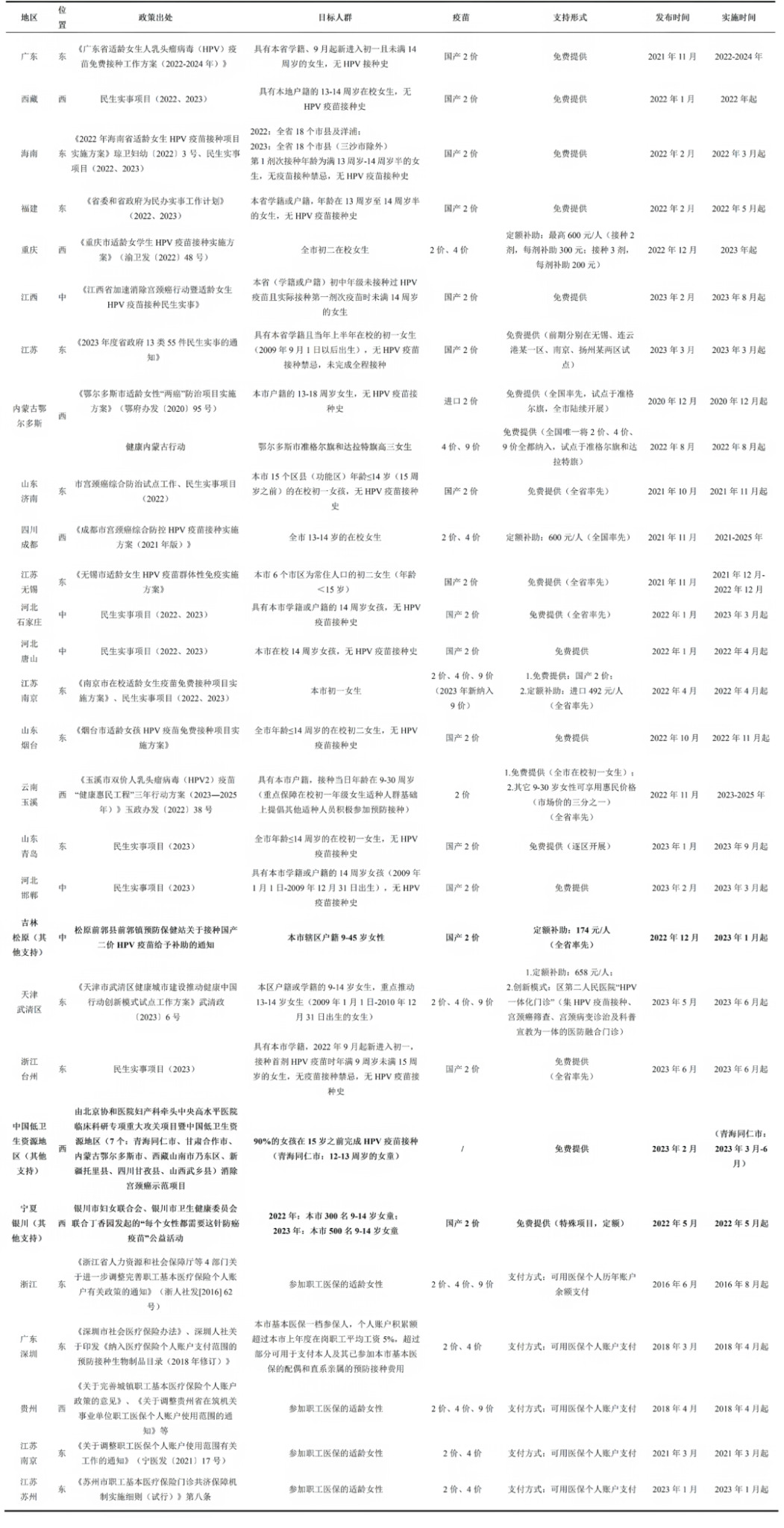Policy updates
01
National Health Commission’s (NHC) response to the inclusion of HPV vaccine in national immunization program (NIP)
On July 9, 2024, the NHCresponded to the proposal at the Second Session of the 14th National People’s Congress (NPC) on promoting free HPV vaccination for school-aged girls.The response emphasized that HPV vaccination can effectively reduce the incidence of cervical cancer and its precancerous lesions. Since January 2023, the central government has encouraged local initiatives for HPV vaccination pilot programs for school-aged girls by releasing a series of policies such as the Action Plan for Accelerating the Elimination of Cervical Cancer (2023–2030).
Ten provinces, including Jiangsu, Zhejiang, Fujian, Jiangxi, Shandong, Hubei, Guangdong, Hainan, Chongqing, and Tibet, and cities such as Zhengzhou, Chengdu, Ordos, and Shijiazhuang, have already provided free domestic-made bivalent HPV vaccination for school-aged girls through financial subsidies and health insurance reimbursement. The State also encourages more developed regions to explore various pathways to support free HPV vaccination for school-aged girls in resource-limited areas. In 2024, the pilot programs will be launched in Liangshan Prefecture, Sichuan Province, and Lijiang City, Yunnan Province, to provide free HPV vaccination services for school-aged girls.
The response indicated that whether the HPV vaccine will be included in the national immunization plan in the future will be decided after rigorous justification, taking into account the demand and the safety, efficacy and accessibility of the vaccine.
https://www.thepaper.cn/newsDetail_forward_28614264
Journal Content Recommendation
02
How can China achieve WHO’s 2030 targets for eliminating cervical cancer?
This review article was jointly published in the BMJ by Prof. Fanghui Zhao , Prof. Jinghe Lang, Prof. Youlin Qiao and Prof. Lan Zhu. The article reviewed the considerable efforts made in cervical cancer prevention in China since the 1990s. Great challenges remain to achieve the elimination goal for the whole country, considering the sheer size of the country, large population, and the disparities in health and economic development. The article discussed three aspects of expanding HPV vaccination, applying new technology, expanding cervical cancer screening coverage using appropriate screening strategy, and optimizing the integration ofscreening and treatment.
Authors suggested that, if China is to reach WHO’s target’s for cervical cancer screening and elimination it will need to adopt approaches that are adapted to local settings. The most effective measures to ensure equal and accessible healthcare services for eligible women are adding HPV vaccination to the national immunization programme, encouraging developed regions to innovate in the resource allocation and financing of cervical cancer screening, and providing more central financial support to low resource regions
Authors noted that a one dose vaccination schedule or screening with extended interval might be helpful in the transition period. However, more evidence is required to carefully evaluate the trade-offs and it is also crucial to establish an efficient mechanism to incorporate evidence into policy decisions. Robust policies are essential to foster technological breakthroughs, streamlining evaluation processes, optimizing systems, and expediting approvals for cutting edge innovations to bolster China’s ability to control cervical cancer. Moreover, achieving cervical cancer elimination demands joint efforts from diverse stakeholders.
https://doi.org/10.1136/bmj-2023-078641
03
Identifying implementation strategies to address barriers of implementing a school-located influenza vaccination program in Beijing
This study was published in Implementation Science Communications. The vaccination rate has remained low and varied widely among schools in Beijing, China. Aiming to ascertain barriers and facilitators of implementing school-located influenza vaccinations (SLIV), semi-structured interviews were conducted with diverse stakeholders (i.e., representatives of both the Department of Health and the Department of Education, school physicians, class headteachers, and parents) , based on the Consolidated Framework for Implementation Research—Expert Recommendations for Implementing Change (CFIR-ERIC) matching tool, practical implementation strategies were proposed to address the identified barriers of SLIV delivery.
The results showed that facilitators included easy access to SLIV, clear responsibilities and close collaboration among government sectors, top-down authority, integrating SLIV into the routine of schools, and priority given to SLIV. The main barriers were parents’ misconception, inefficient coordination for vaccine supply and vaccination dates, the lack of planning, and inadequate access to knowledge and information about the SLIV. To address these barriers, the study suggested implementation strategies at the system (i.e., developing an implementation blueprint, and promoting network weaving), school (i.e., training and educating school implementers), and consumer (i.e., engaging students and parents) levels to improve SLIV implementation.
The study revealed that systematic and targeted interventions can improve the effectiveness of SLIV implementation in Beijing. Continued support for these interventions will help increase influenza vaccine coverage and reduce the spread of influenza.
https://doi.org/10.1186/s43058-023-00501-8
04
Rotavirus immunization benefits and implications in low-income countries
This comment was published in Lancet Global Health. Childhood immunization programmes play a pivotal role in reducing morbidity and mortality in vaccine preventable diseases such as gastroenteritis caused by rotavirus. The rotavirus vaccination programme has been implemented in approximately 100 countries around the world. However, many countries have not yet rolled out the rotavirus vaccine, particularly in sub-Saharan Africa. Countries that have added rotavirus vaccine into their mandatory childhood immunization programmes have reduced the disease incidence.
Protection levels of rotavirus vaccines are not 100%, although live-attenuated vaccines have played an important role in reducing the disease burden, as of the different types of vaccines live-attenuated vaccines are considered the best at producing good protection. The effectiveness of vaccines varies across economic conditions, with lower levels of protection in low-income countries, possibly related to high rates of virus exposure and poor sanitation. Vaccines effectiveness between 80% and 90% would be desirable; however, in the current circumstances of low-income and lower-middle-income countries, protection levels of as low as 50–60% would still be valuable in saving lives coupled with improved sanitation. In addition, past evidence suggests that another factor contributing to low efficacy and effectiveness is the co-administration of oral polio virus vaccine with rotavirus vaccine, resulting in a reduced immune response to rotavirus vaccine.
The authors also noted that no rotavirus escape variant or serotypes have originated or dominated in regions where rotavirus vaccines have been part of routine immunization. After 15 years of rotavirus vaccines, the likelihood of such a trend is negligible, and vaccines have worked well both in homotypic and heterotypic rotaviruses. Performing viral surveillance and genetic characterisation in the areas in which vaccine efficacy is low will be important.
https://doi.org/10.1016/S2214-109X(24)00326-7
05
COVID-19 and influenza vaccine uptake among pregnant women in national cohorts of England and Wales
This article, published in the Nature journal npj Vaccines, investigated COVID-19 and influenza vaccination rates among pregnant women during the COVID-19 pandemic and examined the differences between them, aiming to provide a basis for vaccination interventions. The study used data from the Oxford-Royal College of General Practitioners Research and Surveillance Centre database in England and the Secure Anonymised Information Linkage Databank in Wales, evaluated COVID-19 and influenza vaccination rates and influencing factors by systematically analyzing vaccine uptake in pregnancy women.
A total of 133,300 pregnant women were eligible for COVID-19 vaccination and 178,690 pregnant women eligible for 2020/21 or 2021/22 seasonal influenza vaccination,among these, 133,140 pregnant women in the study cohorts who were eligible for both COVID-19 and influenza vaccinations during pregnancy. The uptake of at least one dose of vaccine was 40.2% for COVID-19 and 41.8% for influenza among eligible pregnant women. Among the 133,140 pregnant women eligible for both vaccinations, 57,970 (43.6%) did not receive either vaccine, 27,350 (20.5%) received both vaccines, 26,190 (19.7%) only received the COVID-19 vaccine and 21,630 (16.2%) only received influenza vaccine.
The COVID-19 and influenza vaccine uptake exhibited significant disparities across ethnic groups, deprivation quintile (i.e., socioeconomic status), household size, and rurality. Pregnant women in the black ethnic group had the least chance of receiving either vaccine, while those of mixed and other ethnic groups had a slightly higher chance of receiving vaccines, but still lower than those of white or Asian ethnic groups. Pregnant women from the most deprived area had a much lower chance of receiving either vaccine , compared to those from the least deprived areas. Additionally, those living in rural areas had a higher chance of receiving both vaccines than those living in urban areas.
This study reveals generally low rates of COVID-19 and influenza vaccination among pregnant women during the pandemic, especially among lower socioeconomic backgrounds and minority groups. The study emphasizes the importance of targeted interventions for these groups and calls on healthcare providers and public agencies to take action to reduce vaccine hesitancy and increase vaccination rates among pregnant women.
https://doi.org/10.1038/s41541-024-00934-9
06
Confidence and barriers: Analysis of factors associated with timely routine childhood vaccination in Canada during the COVID-19 pandemic
This study, published in Vaccine, aimed to understand the factors that influence the timing of routine vaccination of Canadian children during the COVID-19 pandemic. especially focusing on the pandemic-induced barriers to vaccination and their impact on routine vaccinationThe study may provide evidence support for developing measures for vaccination programs to compensate for the impact of declining global vaccination rates.
A regionally representative online survey was conducted in January 2023 including 2036 Canadian parents with children under the age of 18. This study applied the COM-B model of behavior to examine factors influencing vaccination timeliness during the pandemic. Capability with measures of vaccine understanding and decision difficulty, and Motivation with a measure of vaccine confidence. Additionally, Opportunity was assessed through parents’ self-reported experience with barriers to vaccination.
The study showed that 24% of surveyed parents reported having missed or delayed one of their children’s scheduled routine vaccinations since the beginning of the pandemic, though most parents reported having either caught up or the intention to catch up soon. In the absence of opportunity barriers, motivation was associated with timely vaccination for children aged 0–4 years (aOR = 1.81, 95 % CI: 1.14–2.84). However, experience with one or more opportunity barriers, particularly clinic closures and difficulties getting an appointment, eliminated the above-mentioned significant association, suggesting perennial and new pandemic-associated barriers are a critical challenge to vaccine coverage goals in Canada.
The study suggested that barriers to access significantly affected routine vaccination rates among Canadian children during the COVID-19 pandemic, particularly leading to delays in vaccination and reduced parental confidence in vaccines. Removing these barriers is critical to restoring and improving vaccination rates.
https://doi.org/10.1016/j.vaccine.2024.126236
Content Editor: Ziqi Liu
Page Editor: Ziqi Liu





